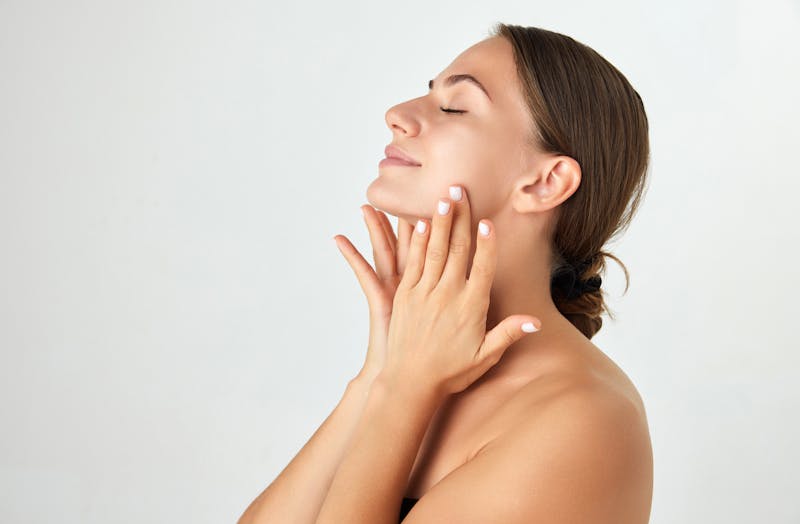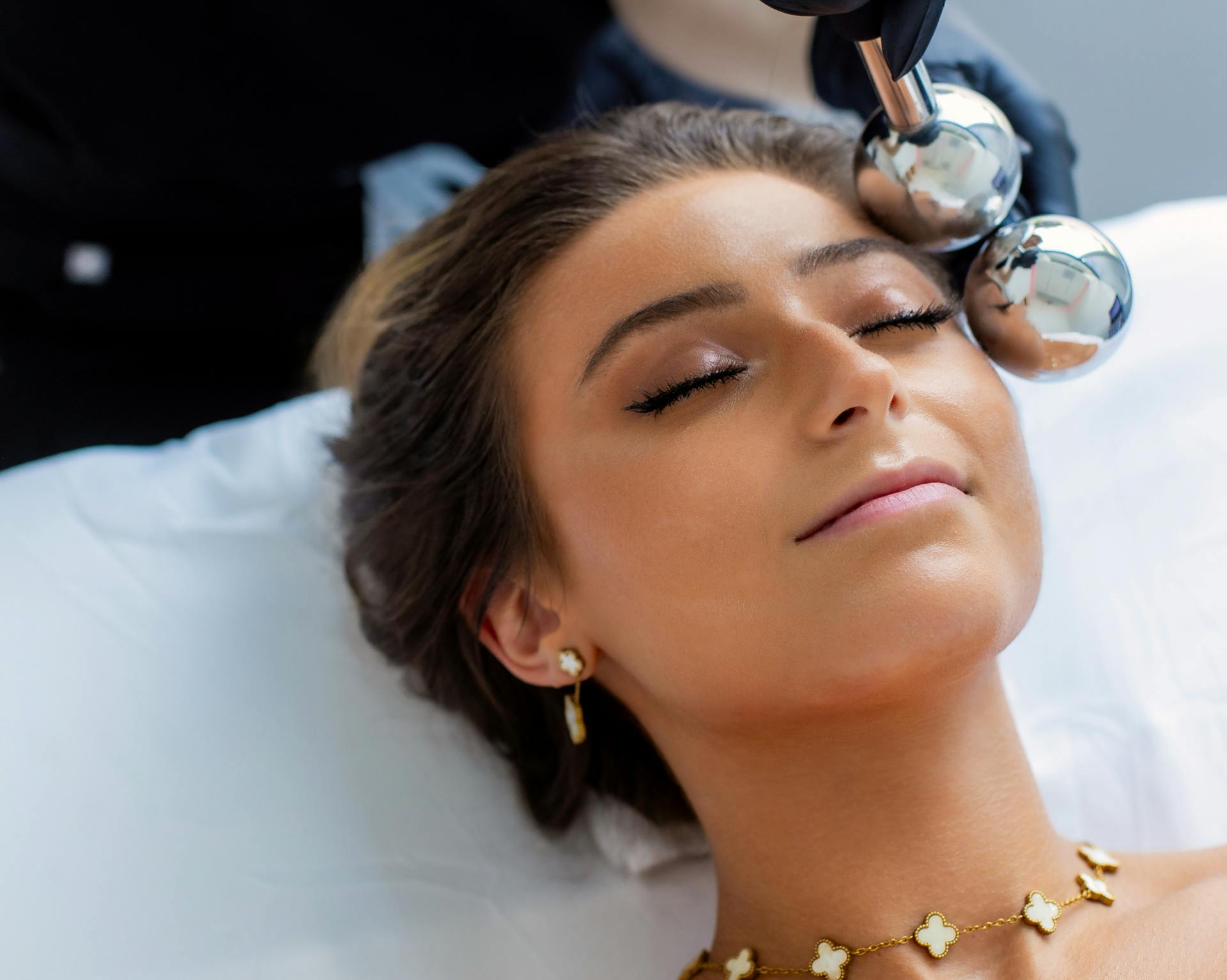
Rhinoplasty, or nose surgery, is a cosmetic procedure that helps to balance the profile and restore self-confidence. Whether you are unhappy with the appearance of the nasal bridge, tip, or nostrils, or you are experiencing functional issues that compromise your breathing, rhinoplasty offers transformative results.
It is critical to prepare for recovery before rhinoplasty, as this can help ensure a seamless treatment journey free from stress and worry. Proper preparation can also help reduce discomfort and accelerate your healing process. In this blog, our team at NewSkin explores the best aftercare practices for rhinoplasty, including 10 vital tips for streamlining your recovery and minimizing rhinoplasty recovery times.
Understanding Rhinoplasty Recovery Times
After rhinoplasty, patients normally experience mild swelling, bruising, and soreness around the nose. While the revised nasal shape gradually becomes more evident with every passing week of healing, some degree of residual swelling can persist for up to 12 months. For this reason, it is essential that patients not judge their final results too rapidly. It can be useful to browse online forums discussing rhinoplasty recovery where other patients have posted information about their healing journeys. Everyone is different, but patience is key.
As part of your aftercare instructions, your plastic surgeon will offer information on the following:
- Caring for your surgical sites
- Ways to identify complications early
- A schedule for your follow-up visits
Best practices for a smooth recovery encompass:
- Keeping surgical sites clean with gentle cleansing and proper hygiene
- Using prescribed medications to alleviate postoperative discomfort
- Following all of your surgeon’s instructions to the letter
10 Tips for a Smooth Rhinoplasty Recovery
By following these guidelines after your rhinoplasty surgery, you can protect your investment in your appearance and health and safeguard against possible complications.
1. Sleep With Your Head Elevated
After nose surgery, side sleeping can increase the time needed for bruising and swelling to dissipate. The ideal resting and sleeping position during rhinoplasty recovery is on your back with your head elevated, such as on several pillows or a foam wedge to support your neck and head. Sleeping in a recliner can also be beneficial during the first few weeks of healing.
2. Hydrate Often
Drinking enough water after surgery is an important aspect of healing. Drinking plenty of fluids helps accelerate cellular renewal.
3. Follow a Nutritious Diet
As you heal, your body needs the right nutrients to complete the self-repair process. Lean proteins support tissue regrowth, while foods containing vitamin A and C help to minimize inflammation. Choose leafy greens, fruits, nuts, seeds, legumes, and healthy fats like avocado. Do your best to avoid overly salty foods during recovery, which can prolong inflammation.
4. Steer Clear of Strenuous Exercise
For busy, active patients, it can be challenging to devote the proper amount of time to resting and recuperating. However, returning to the gym too rapidly can increase swelling and compromise the healing process. For the first 2 weeks after rhinoplasty, stick with light, gentle walks, which can boost circulation and blood flow while also elevating your mood and well-being.
5. Follow Your Surgeon’s Instructions Carefully
After surgery, your surgeon will offer you detailed, personalized aftercare instructions to help you take the right steps for rhinoplasty recovery. These guidelines include instructions on bathing and showering, wound care, taking medications, resuming exercise, and returning to work. Always take pain medications as instructed and don’t use over-the-counter painkillers such as ibuprofen unless you clear them with your doctor first.
6. Use a Cold Compress
Cold compresses or frozen objects (like an ice pack or frozen peas) wrapped in cloth can be applied to the eyes to minimize swelling, discomfort, and inflammation. After rhinoplasty, follow your surgeon’s advice on how to use a cold compress properly. You should never put direct pressure on your nose after surgery, but using a compress on the cheeks and eyes can help alleviate soreness.
7. Avoid Pressure on the Nose
Your nose needs time to heal, and any pressure on the nose can change the way it heals. Avoid impact sports or any activity that might lead to a ball striking your face. For many patients, it is recommended to avoid having glasses rest on the nose for 6 weeks. You can wear contacts or tape your glasses to the skin above your nose to keep them from resting on your nose. Your surgeon will give you personalized recommendations about when it is safe to wear glasses normally.
8. Don’t Smoke or Drink Alcohol
Smoking can have a disastrous effect on the healing process. It can restrict blood flow and compromise aesthetic results. Drinking alcohol can dehydrate your body, which in turn enhances the risks of bruising and swelling. Avoid smoking and drinking until your doctor clears you to resume.
9. Refrain From Blowing Your Nose
Nasal congestion is a common side effect after rhinoplasty that can last several weeks. It usually arises due to swelling in the nasal tissues. While you may be tempted to blow your nose during this period, you should do everything possible to avoid the urge, as it can disturb your healing process. As an alternative, your doctor can recommend a nasal spray to hydrate the nose. You will be able to blow your nose again.
10. Prioritize Rest
Prior to rhinoplasty, you should prepare your home environment for recovery, making sure you have a comfortable space and everything you need. During the first 7-10 days, you will need to prioritize rest and sleep. Even once the initial stage of your rhinoplasty recovery timeline has passed, you will need to keep getting proper rest and limiting strenuous activity. Your body needs all its energy for self-repair. By devoting adequate time to recovery, you can help minimize the risk of complications.
What Is the Takeaway?
Rhinoplasty is a rewarding cosmetic procedure that helps patients reclaim their appearance, confidence, and peace of mind. By properly anticipating and preparing for the recovery phase of the treatment process, patients can enjoy a more streamlined, seamless aesthetic journey, free from complications. Guidelines such as refraining from smoking and drinking alcohol, postponing strenuous exercise, following a nutritious diet, and getting plenty of downtime and rest can help expedite healing and increase comfort and well-being. Always look to your surgeon for answers, follow instructions, and don’t hesitate to reach out for help if any questions or concerns should arise after your procedure.
Have Questions About Rhinoplasty? Contact Us Today at NewSkin to Book Your Private Consultation!
Dr. Brian Scott is a facial plastic surgeon and rhinoplasty specialist. He leads our world-class practice and is excited to work with you to help you achieve the appearance you have always envisioned for yourself. If you have questions about nose surgery and think you might be a good candidate, please contact us today at (206) 222-6985 to book your consultation!



